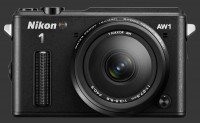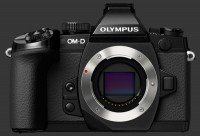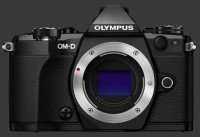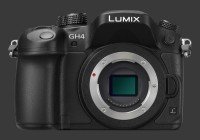More Weather-Sealed Mirrorless Differences
Secondary Weatherproof Differences
Mirrorless cameras have evolved rapidly compared to DSLRs. For this reason and because they are relatively new, there are much more differences between mirrorless models than between DSLRs. Specifically, each is designed to offer a different balance of compromise between image-quality, performance and size. Now that major differences were covered in the previous page, it is time to cover the less obvious ones.
Focus
The latest generation sensors have extremely fast read-out speeds. This significantly reduced the performance gap between Phase-Detect and Contrast-Detect autofocus. Both focus very fast now but Contrast-Detect AF is more sensitive. This is why all these cameras fall back to Contrast-Detect when light is very low. Still, both Panasonic mirrorless here are sensitive down to a class-leading -4 EV.
Phase-Detection can only be performed at specific locations on the sensor. On the other hand, contrast-detection can be done on any area of the sensor. Both Panasonic cameras take this to the extreme by offering a high number of areas in several sizes which can be combined into shapes to precisely control where autofocus occurs. Other cameras here limit the selection to a square or rectangular area.
Early EVF and LCD were so lacking in resolution that it was impossible to confirm if focus was achieved or not. This made it impossible to focus manually. Luckily, this is no longer the case. At 2.4 megapixels, the EVFs of weather-sealed mirrorless cameras are all incredibly sharp. This is generally sufficient to focus manually but nearly all these cameras have MF-Assist functions:
- Electronic Zoom - Shows a zoomed-in view of the scene which moves around along with the focus-point. Very easy to use but may require a few refinement to nail. Implemented on all these except the AW1.
- Focus Peaking - Highlights edges of maximum contrast. Usually hit-or-miss because there can be lots of local peaks. Also available on the all but the AW1.
- Digital Range-Finder - Renders a monochrome split image as seen by Phase-Detect sensors. Easy to align and efficient. Implemented by both versions of the Fuji X-T1 only.
Speed & Drive
The lack of a mirror which defines mirrorless cameras allows them to reach speeds not possible on a DSLR. This removes the slowest mechanism part from the system. Mirrorless cameras can also use an electronic-shutter to avoid another limiting component. The bottleneck that remains is the sensor read-out speed which depends on resolution.
Table 4 below compares the maximum speeds of weatherproof mirrorless cameras. Note that the Nikon 1 AW1 does not have a mechanical-shutter at all while both the original Fuji X-T1 and Panasonic GH4 do not use an electronic-shutter. All these cameras offer Bulb mode for longer exposures, some are rather limited compared to DSLRs.
| Table 4 - Shutters | |||||||
|---|---|---|---|---|---|---|---|
| Shutter-Speed | Maximum | Minimum | Bulb | Continuous | Buffer | ||
| Camera | Mech | Elec | Mech | Elec | Limit | Drive | Depth |
| Fuji X-T1 | 1/4000 | N / A | 30s | N / A | 1 Hour | 8 FPS | 47 JPEG 24 RAW |
| Fuji X-T1 Graphite |
1/4000 | 1/32000 | 30s | 1s | 1 Hour | 8 FPS | 47 JPEG 24 RAW |
| Nikon 1 AW1 | N / A | 1/16000 | N / A | 30s | 2 Mins | 60 FPS | 60 JPEG 30 RAW |
| Olympus OM-D E-M1 |
1/8000 | N / A | 60s | N / A | 30 Mins | 10 FPS | 95 JPEG 41 RAW |
| Olympus OM-D E-M5 Mark II |
1/8000 | 1/16000 | 60s | 60s | 30 Mins | 10 FPS | 19 JPEG 16 RAW |
| Panasonic GH4 | 1/8000 | N / A | 60s | N / A | 1 Hour | 12 FPS | 100 JPG 40 RAW |
| Panasonic GX8 | 1/8000 | 1/16000 | 60s | 1s | 30 Mins | 8 FPS | Unlimited JPEG 30 RAW |
Continuous drive at maximum resolution hovers between 8 and 12 FPS except for the Nikon which manages an incredible 60 FPS. To reach this speed it must lock focus on the first frame, otherwise it can do 15 FPS which is still faster than all its competitors. The Panasonic GH4 and Panasonic GX8 offer 4K Photo mode which is a burst of 4K imagesRoughly 12 megapixels. at 30 FPS for up to 30 frames.
AEB is available on these digital cameras except for the AW1. Fuji offers a minimal 3-frame bracket with up to 1 EV steps. The remaining cameras can bracket 7 frames with 2/3 EV steps for Olympus ones and 1 EV steps for Panasonic. Wider increments are available for brackets with fewer frames. Again, other than the Nikon, all these mirrorless offer an Interval-Timer and Multiple-Exposures. Panasonic offers another level of sophistication on its GH4 and GX8 with Stop-Motion Animation, allowing to manually trigger each exposure.
TIP The complete specifications of any digital camera can be compared using our Camera Compare page: Compare all 7 cropped-sensor weather-sealed mirrorless cameras now.
Ergonomics
When it comes to professional photography, efficient controls are essential. This means giving quick access to exposure parameters and common photography controls. As mentioned in the introduction, the Nikon 1 AW1
Nikon 1 AW1 does not target this audience. It actually has no control-dials, just two directional switches which mimic a single control-dial.
The Olympus OM-D E-M1
Olympus OM-D E-M1, Olympus OM-D E-M5 Mark II
Olympus OM-D E-M5 Mark II and Panasonic Lumix DMC-GX8
Panasonic Lumix DMC-GX8 all provide dual control-dials. This gives direct controls to 2 of 3 exposure parameters. The Panasonic Lumix DMC-GH4
Panasonic Lumix DMC-GH4 adds a third control-dial which unfortunately does not control the last parameter. The GH4 adds one dial for Drive mode and the GX8 adds one for EC. There is a tremendous amount of customization possible for all these cameras. The E-M1 and GX8 each offer 8 customizable buttons while the E-M5 Mark II and GH5 have 5.
Fuji offers a completely different approach with dedicated analog dials, plus generic dual control-dials. With any X-T1, ISO and shutter-speed have dedicated dials. Aperture is normally controlled by the aperture-ring which is present on all weather-sealed X-mount lenses. One control-dial controls the aperture when there is no aperture-ring is present, while the other adjusts shutter-speed ±2/3 EV. Additionally, the X-T1 offers dedicated dials for Drive mode and Metering mode. There are 6 customizable buttons these Fuji mirrorless cameras. Despite being freezeproof though, controls on the X-T1 are too flat to be usable with gloves on.
Overall, the easiest and most direct controls to use are on the Panasonic GX8. The other Panasonic and both Olympus cameras are quite efficient but slightly more error-prone since their interface is more modal. Customization greatly helps, particularly on the Olympus. Fuji controls almost completely modal but their analog aspect makes it easier to keep track of current parameters.
Continue to page 4 to compare image-quality and overall performance of all these mirrorless digital cameras.
Please Support Neocamera
All information on Neocamera is provided free of charge yet running this website is a huge endeavor. Purchases made via affiliate links found throughout the site help keep it running and up-to-date. There is no additional cost to you, so please consider buying via these links to our affilates:
If you found any information on this site valuable and did not purchase via our affiliate links, please considering donating via PayPal:
Any amount will be greatly appreaciated. Thank you for your support!
Updates
2024.11.18

Best 2024 Photography Gifts for Every Budget
Great gifts for photographers and photo enthusiasts selected for every budget among the best products of 2024.
2024.08.07

Eye Protection Tips for Professional Photographers
The four main considerations for professional photographers regarding eyewear.
2024.07.14

Fujifilm X100VI Review
Flagship fixed-lens compact digital camera with a 40 MP sensor and Image-Stabilization, a first for the series. Retro design featuring dual control-dials, plus direct ISO, Shutter-Speed and EC dials. Its hybrid viewfinder can switch between EVF and OVF mode.
2024.05.09

Fujifilm GFX100 II Review
Flagship 102 Megapixels Medium-Format Mirrorless Digital Camera with 8-Stop 5-Axis IBIS, 8 FPS Drive, 8K Video and 400 MP Super-Resolution capture in a weatherproof and freezeproof body with dual control-dials and dual memory-card slots.
2024.04.03

Fujifilm X-T5 Review
Newest Fujifilm flagship boasting a 40 MP APS-C sensor, 5-axis IBIS with 7-stop efficiency, 15 FPS continuous drive, 6.2K Video capture, dual control-dials and dual SDXC UHS-II slots in a sturdy weatherproof and freezeproof body.
2023.11.20

Best Digital Cameras of 2023
Find out which are the Best Digital Cameras of 2023. All the new Mirrorless Digital Cameras from entry-level to high-end professional.
2023.07.10

Fujifilm X-H2 Review
40 Megapixels APS-C Hybrid Mirrorless Digital Camera with 7-stop IBIS. Fastest shutter ever and 8K video capture. Large builtin EVF with 0.8X magnification and 5.8 MP, plus an Eye-Start Sensor. Packed with features and large number of controls in a weatherproof and freezeproof body.
2023.05.07

Sony FE 20-70mm F/4G Review
Review of the unique Sony FE 20-70mm F/4G lens. The optical zoom of this lens spans ultra-wide-angle and medium focal-length coverage, making it one of the most versatile Full-Frame lenses on the market.
2023.01.15

Huion Inspiroy Dial 2 Review
Review of the Huion Inspiroy Dial 2 tablet, a medium sized drawing surface with dual dials and customizable buttons. Connects via USB-C or Bluetooth 5.0 with Windows, Linux and Android support.
2022.12.08

How to Pack for a Photo Trip
Find out how to pack for a travel photography trip, carry your gear safely while meeting airline regulations.
2022.11.13

Best Digital Cameras of 2022
The best digital cameras of 2022. A short list of the most outstanding models in their respective categories. Choose one for yourself or as a gift.
2022.09.21

Pentax DA* 60-250mm F/4 SDM Review
Review of the Pentax DA* 60-250mm F/4 SDM, the constant-aperture telephoto zoom with the highest zoom-ratio on the market.
2024.11.18
2024.08.07
2024.07.14
2024.05.09
2024.04.03
2023.11.20
2023.07.10
2023.05.07
2023.01.15
2022.12.08
2022.11.13
2022.09.21
NEWS
2024.11.19

Sony Unveils Their Brightest Zoom Lens
Lens
2024.11.19

Sony Finally Upgrades Alpha A1 Flagship Camera
Digital Camera
2024.11.12

New Laowa Slim Ultra-Wide Lens
Lens
2024.11.07

Hasselblad Adds XCD 75mm Lens
Lens
2024.11.07

Nikon Launches Z50 II
Digital Camera
2024.11.05

Venus Created Worlds First Shift Zoom Lens
Lens
2024.11.01

Nikon Announces Development of Standard Power-Zoom Lens
Lens
2024.10.30

Canon Launches 3D APS-C plus 3 Extra RF Lenses
Lens
2024.10.14

Fujifilm Extends APS-C Lineup
Digital Camera ○ Lens
2024.09.27

Leica Launches New Q3 with 43mm Lens
Digital Camera
2024.09.24

Kickback and Format Join to Promote Youth Sports Photographers
2024.09.18

BioLite Power Backup Kickstarter
Technology
















